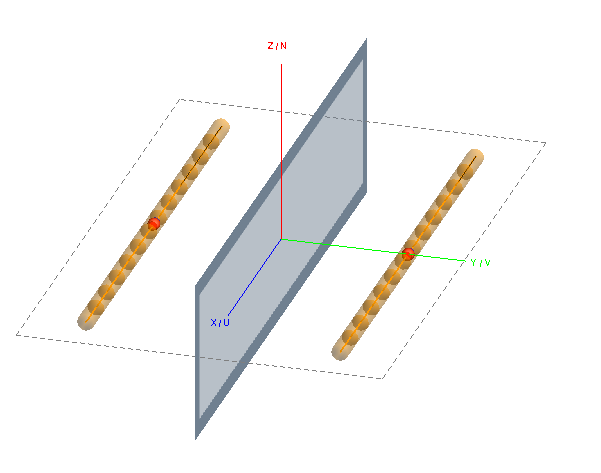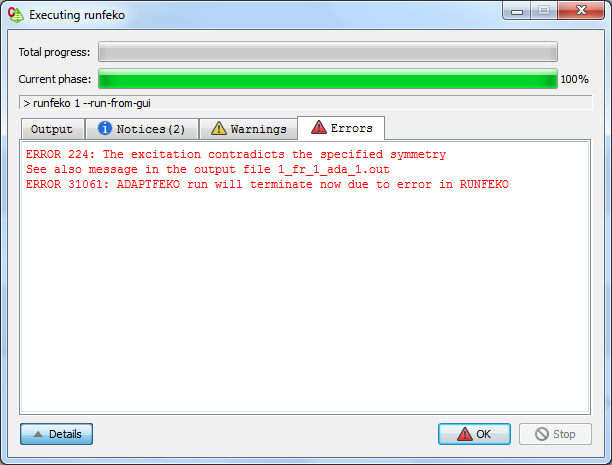__Hi everybody.
1. I am trying to use magnetic symmetry to model simple 2 element array (see image and 1.cfx file below). But FEKO 7.0-238289 (we have such license) gives me an error (i've attached image). Can anybody explain me, where is my mistake. User manual tells, that it is possible to model such structure, if 'geometry to be meshed does indeed adhere to
the specified model symmetry (both geometric symmetry as well as symmetry of excitation and
loads where magnetic/electric symmetry is used)'
2. Another question. I calculate magnitude of active reflection coefficient for 2-port circuit in POSTFEKO by summation
mag( REAL(S11)+REAL(S12) +i*(IMAG(S11)+IMAG(S12)) ) .
Now assume there are 10 ports  /emoticons/default_biggrin.png' srcset='/emoticons/biggrin@2x.png 2x' title=':D' width='20' />. Is there any other way to find Active S parameters (or active VSWR)?
/emoticons/default_biggrin.png' srcset='/emoticons/biggrin@2x.png 2x' title=':D' width='20' />. Is there any other way to find Active S parameters (or active VSWR)?
<?xml version="1.0" encoding="UTF-8"?>
<?xml version="1.0" encoding="UTF-8"?>
Unable to find an attachment - read this blog